The Great Blue Hole, Belize

The Great Blue Hole, located off the coast of Belize, is one of the world’s most remarkable marine formations. This perfectly circular sinkhole spans approximately 305 meters in diameter and reaches depths of over 120 meters. Recognized for its deep blue waters and distinct geological features, the Great Blue Hole is a sought-after destination for divers and marine enthusiasts. Part of the Belize Barrier Reef Reserve System, a UNESCO World Heritage site, the Great Blue Hole is surrounded by shallow coral reefs that contrast beautifully with its darker depths. Beneath the surface, divers can explore a unique underwater landscape filled with caverns, stalactites, and a diverse array of marine life, including reef sharks, rays, and various tropical fish. Beyond its visual appeal, the Great Blue Hole plays a significant role in marine conservation. Divers and researchers contribute to efforts aimed at preserving the reef’s delicate ecosystem, making it a site of both adventure and environmental importance.
Lake Huron, Canada
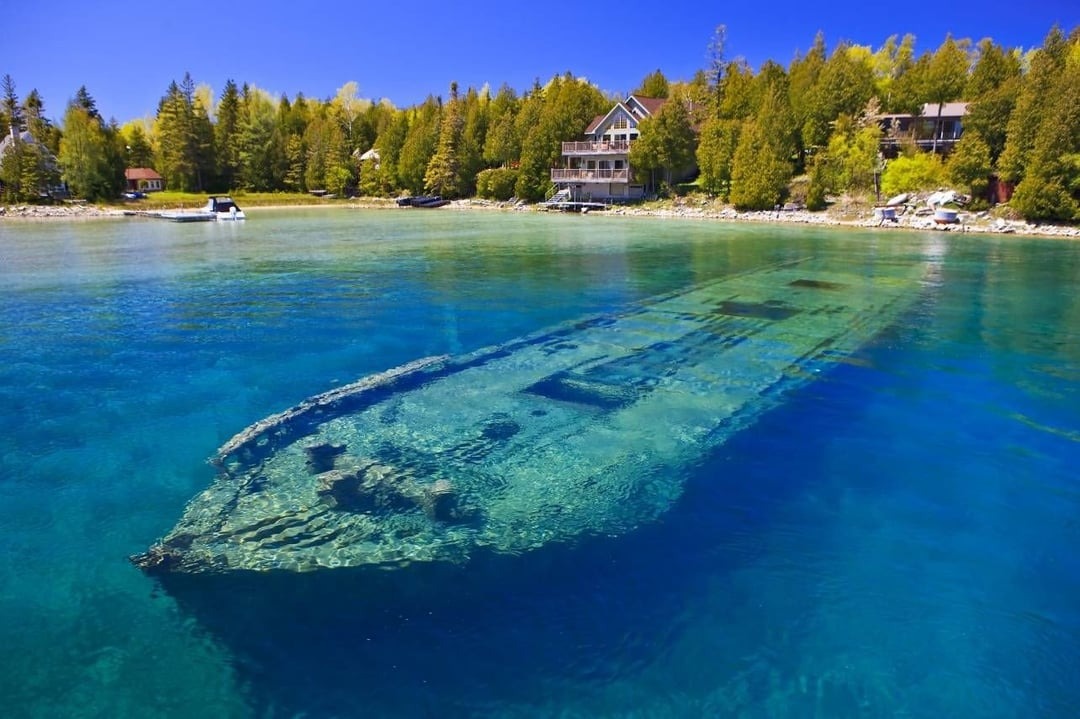
Lake Huron, one of North America’s largest freshwater lakes, is not only known for its vast expanse but also for its historical significance and striking landscapes. With a shoreline stretching over 3,800 kilometers, the lake has been the site of thousands of shipwrecks, many of which remain well-preserved beneath the surface. These underwater relics offer a glimpse into the region’s maritime history and have become popular among divers and historians. A notable natural feature of Lake Huron is the Blue Mountains, a dramatic limestone cliff system that rises 300 meters above the lake’s waters. These rugged formations provide breathtaking views and serve as a popular destination for outdoor activities such as hiking, photography, and sightseeing. The combination of submerged history and stunning natural beauty makes Lake Huron a captivating destination for those interested in exploration and outdoor adventures.
The Yonaguni Monument, Japan
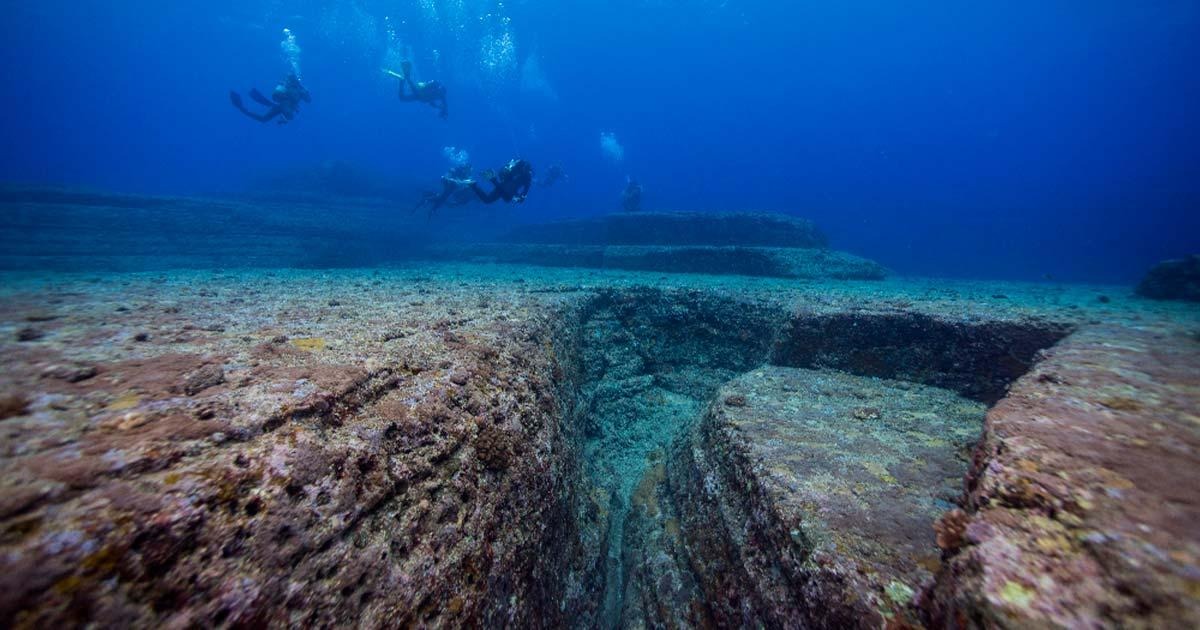
Located off the coast of Yonaguni Island, Japan, the Yonaguni Monument is a fascinating underwater structure that continues to intrigue researchers and divers. Discovered in 1986, the site features terraced rock formations that resemble steps and platforms, leading to ongoing discussions about whether it is a natural geological occurrence or a man-made relic from an ancient civilization. Submerged approximately 20 meters below the surface, the monument rises about 25 meters in height. The formation’s distinct angles and patterns have sparked various theories regarding its origins, with some suggesting that it may have historical or cultural significance. Regardless of its origins, the Yonaguni Monument remains a popular diving site, drawing visitors who seek to experience its unique features firsthand. The site continues to be an area of interest for researchers studying underwater geological formations and potential historical connections.
The Amphitrite Statue, Cayman Islands
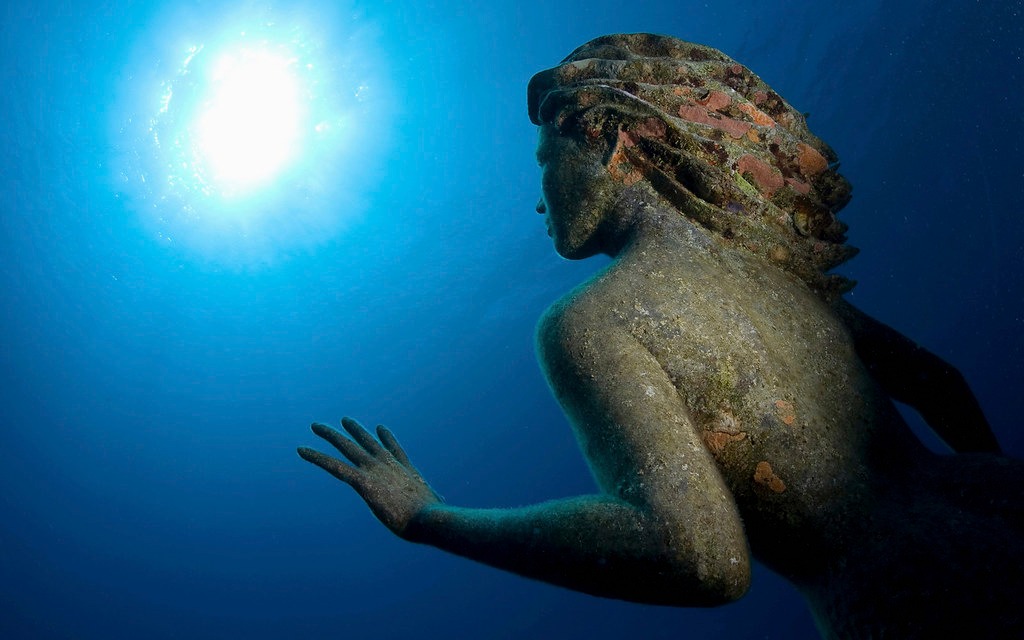
Resting six meters beneath the waters of Grand Cayman, the Amphitrite Statue is a striking underwater sculpture that has become a well-known attraction for divers and snorkelers. Depicting a mermaid, the statue adds an artistic element to the underwater landscape while also serving as a habitat for marine life. Over time, coral and marine organisms have grown around the statue, contributing to its transformation into a thriving ecosystem. The presence of this sculpture supports marine conservation efforts, encouraging awareness of underwater biodiversity. Visitors exploring the Amphitrite Statue can enjoy a tranquil and immersive experience, appreciating both the artistic craftsmanship and the vibrant marine environment surrounding it.
Green Lake, Austria
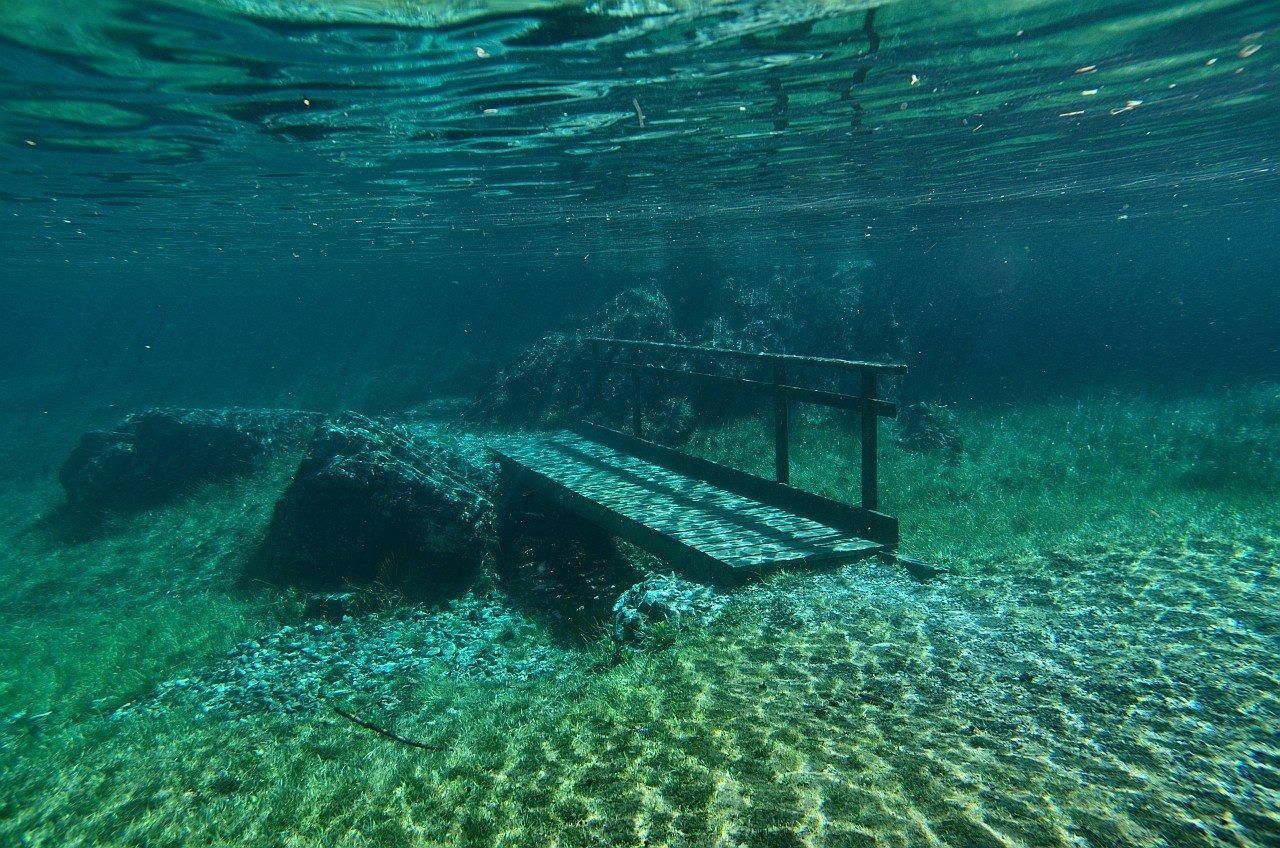
Nestled in the Styrian Alps, Austria’s Green Lake (Grüner See) is a seasonal wonder that captivates visitors with its remarkable transformation. During the winter and fall, the area consists of picturesque hiking trails and scenic landscapes. However, as the snow melts in spring, the rising water levels submerge the surrounding park, creating a unique underwater environment. During this seasonal flooding, park benches, pathways, and trees are enveloped by crystal-clear waters, forming an extraordinary aquatic scene that attracts divers and photographers. The lake’s striking emerald hue enhances its visual appeal, making it a favorite among nature enthusiasts. Green Lake offers various recreational opportunities throughout the year, from hiking and sightseeing to seasonal diving, allowing visitors to experience its changing beauty in different ways.
Silfra, Iceland

Located in Þingvellir National Park, Silfra is a remarkable diving site that offers a rare opportunity to explore the boundary between the North American and Eurasian tectonic plates. The Silfra fissure is the result of the plates slowly drifting apart, creating an ever-changing underwater landscape. The waters of Silfra are exceptionally clear, with visibility often exceeding 100 meters. Fed by glacial meltwater, the site’s pristine blue hues and dramatic rock formations make it a unique destination for divers and snorkelers. The water’s purity and geological significance contribute to the site’s appeal among those interested in both adventure and natural sciences. Silfra’s rift continues to widen by approximately two centimeters per year, offering a tangible glimpse into the Earth’s geological activity. This dynamic natural phenomenon makes it one of the most distinctive underwater experiences in the world.
Dos Hoyos, Mexico
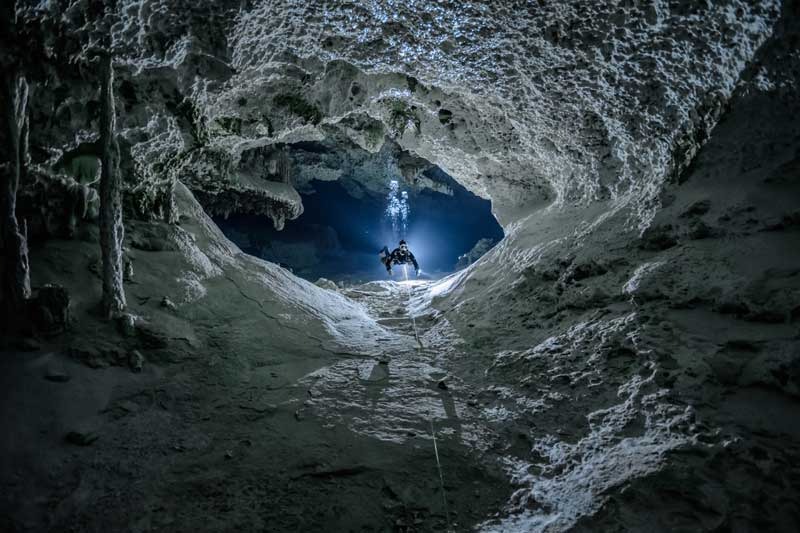
Located in Mexico’s lush landscapes, Dos Hoyos is an impressive underwater cave system that has gained recognition for its stunning geological formations. The cave features two main openings, or “hoyos,” which provide access to an intricate subterranean environment. The cave’s clear waters and fascinating rock formations, including stalactites and stalagmites, create a mesmerizing atmosphere for divers. Due to its striking visuals, Dos Hoyos has also been featured in media productions, including an episode for the Discovery Channel. Divers visiting Dos Hoyos can explore its unique underwater passages while observing the rich aquatic life that inhabits the area. This cave system is a must-visit for those interested in cave diving and underwater exploration.
Christ of the Abyss, Italy
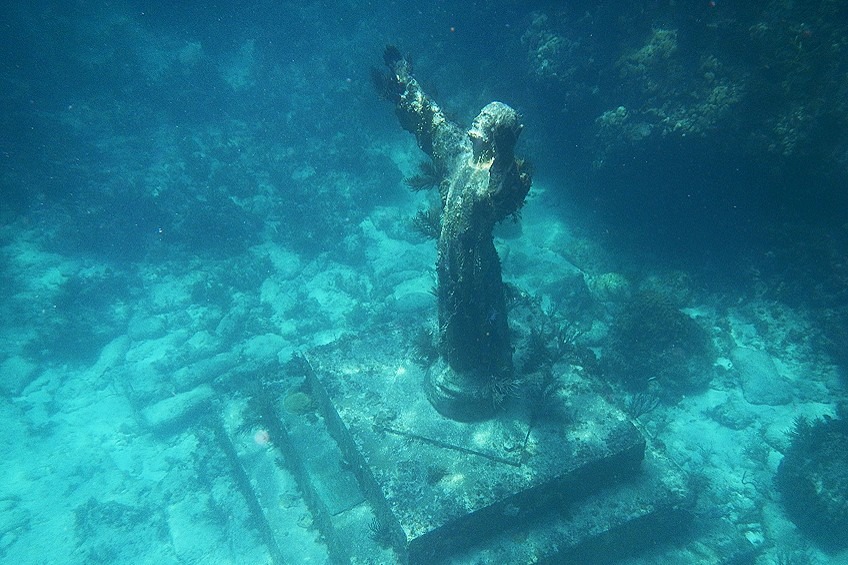
Christ of the Abyss (Cristo degli Abissi) is a renowned underwater statue located near the Italian island of San Fruttuoso. Submerged at a depth of approximately 17 meters, this bronze statue of Christ was placed in the Mediterranean Sea in 1954 as a tribute to divers and the marine environment. With arms outstretched, the statue symbolizes peace and protection. Sunlight filtering through the water enhances its ethereal presence, creating a visually striking effect. Over the years, marine life and coral have naturally integrated with the statue, adding to its underwater beauty. Christ of the Abyss is a popular site for divers and snorkelers who wish to experience both its artistic significance and the surrounding marine biodiversity. The statue continues to be a meaningful symbol within the diving community.
Leave a Reply